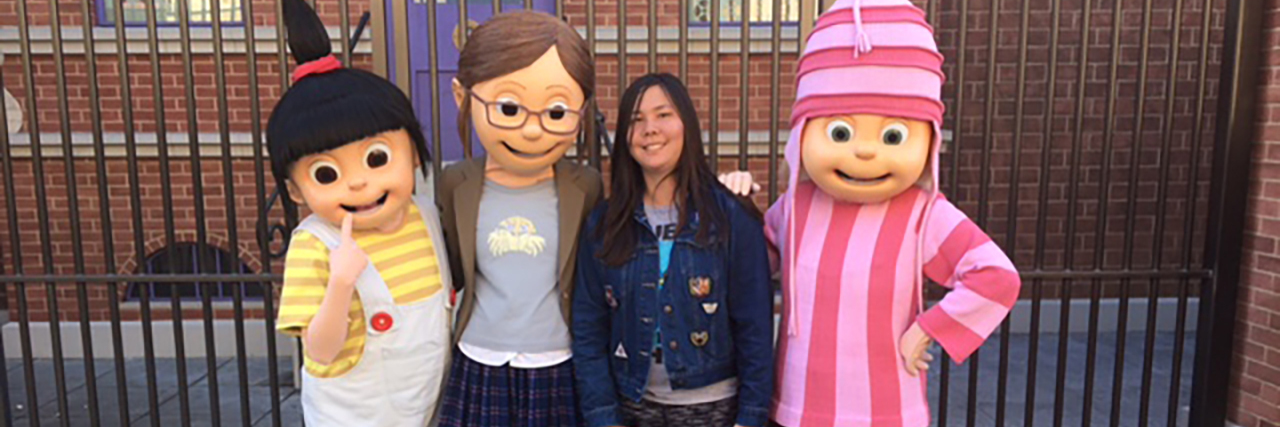Whenever I go shopping in stores or browse online, I’ve noticed that certain things are categorized based on factors such as age, gender etc. For instance, the children’s section in clothing stores tends to have more character clothing, bright colors and be cutesier, while the adult section has less selection of character clothing and tends to be more sophisticated. Even the gift guides, specific lifestyle blogs and advertisements tend to categorize specific activities, themed characters etc. based on age groups. The examples I just mentioned are a reflection of the expectations society has in terms of what interests are appropriate for each age group and stage.
For some people with autism like myself, the concept of “age appropriateness” does not apply. We tend to not care about these kinds of arbitrary standards. However, many professionals and parents discourage interests that are perceived as inappropriate for one’s age. This well-meaning gesture is often an attempt to get the person to “fit in” better with their peers. As a 25-year old on the spectrum who has interests targeted to a younger audience, I disagree with this practice of getting autistic people (particularly teens and adults) to develop more “appropriate interests.” It pathologizes what is actually individual expression of interests and preferences all humans have. With this framework in mind, I will use my experience with this topic to explain why I dislike the term “age appropriateness.”
Ever since I was little, I had a strong interest in characters. In preschool it was Pocahontas and Lion King, while in grade school it was the Rugrats, Pokemon and Powerpuff Girls. The characters I liked would change throughout the years, but one thing would remain constant — characters continued to be my special interest. Fast forward to middle school; I still had a strong preoccupation with characters. I developed a strong preoccupation with Hello Kitty as well as Disney Princesses. I would have to buy merchandise from bedding to jewelry that was plastered with my favorite characters. Unlike the earlier years of elementary school and preschool, it became less “socially acceptable” to be into characters. Most of the girls started developing more mature interests such as boys and fashion.
As with some other parents of autistic teens, my mother became concerned that I didn’t have a fashion sense and still clung to my childhood interests as I approached high school. This is one of the reasons why I started working with a behaviorist — to help me learn what other teens were into. Sessions with the behaviorist consisted of trips to the mall and going to teenage stores, looking at fashion magazines as well as watching “trendy” TV shows. Perhaps my least favorite part was the “cool “or “not cool” chart that my therapist did during a social skills group one time for learning the “in’s” and “out’s” of teen culture.
Looking back, I know all this was done out of good intentions. My mother wanted me to have a smooth transition to high school as well as to appear socially adjusted and to fit in with my female peers. Contrary to my support team’s belief that I was “clueless” about teen culture, I actually was observing the typical peers at school and how they dressed — I just couldn’t care less. The exposure of learning teenage trends led me to eventually trade my fascination with Disney Princesses and Hello Kitty for more “age appropriate” interests in fashion. You could say this therapy helped me learn to “fit in” better with my same-aged peers — at least until young adulthood.
It wasn’t until my third year in college that I rekindled my love of Hello Kitty and Disney Princesses, which gave way to many other childlike characters such as “Frozen,” My Little Pony etc. This is when I began to realize how destructive therapeutic attempts to encourage more “age appropriate” interests can be. I became anxious and second-guessed myself (which I still do today) when I started liking cartoons again. This is because when I was younger, I picked up on how it was considered “childish” to like cartoons such as Hello Kitty, “Frozen” etc. I thought I was regressing because for the last five or six years, I had interests that were more mainstream.
Thankfully, my mother is now more accepting of my unconventional interests. With the support of others, I am slowly learning to accept that my interest in characters is just a part of what makes me unique.
Sometimes well meaning attempts by parents and professionals can be harmful to the self-esteem of autistic people. Every human being has their own interests and preferences. Telling autistic people they shouldn’t like certain things because it’s not “age appropriate” is one way of denying them choice and control over their own lives. Just because an interest is unusual and our neurotypical peers might not appreciate it, that doesn’t mean it’s wrong.
I get the parents’ concern of wanting their child to have friends and feeling that fitting in might make their lives easier. But as someone on the spectrum who’s been through that, I want to tell parents that their child’s happiness is more important than fitting in. They will find people who will accept them the way they are. Age appropriate is an arbitrary concept based on a mathematical algorithm of frequency. It becomes a problem when we take these “frequencies” in each age group and make them into social rules. Individual interests don’t even factor into the equation.
As long as autistic people’s interests don’t hurt anyone and they are not neglecting their responsibilities or basic functions, I think parents and professionals need to embrace their individual interests and use it as a way to motivate and connect with them.
We want to hear your story. Become a Mighty contributor here.
Image provided by contributor.

